Widening social inequalities that affect children's education, including those living in poverty, often become the focus of public attention. In particular, educational inequality originating in social class distinction and family backgrounds and the decline of academic performance associated with such inequality are considered serious social issues.
The majority of opinions regarding these issues come from researchers in the areas of educational sociology and educational economics. Based on their mass-data analysis, these researchers are emphatic regarding the following: parents' educational background and social class significantly restrict children's learning environments and academic performance, which reproduces educational inequality (e.g., Kariya & Shimizu, 2004; Matsuoka, 2019; Nozaki, Higuchi, Nakamuro, and Senoh, 2018; Akabayashi, Naoi, and Shikishima, 2016).
Meanwhile, researchers in behavioral genetics (the study of genetic and environmental influences on individual differences in human behavior) have clarified significant genetic effects on children's intelligence and academic performance (e.g., Loehlin & Nichols, 1976; Lichtenstein & Pedersen, 1997; Chambers, 2000; Asbury & Plomin, 2013). In behavioral genetics, family environmental differences such as economic inequality are considered to involve not only environmental factors but also genetic factors. Researchers repeatedly point out the substantial influence of genetic factors on a specific phenomenon that could have apparently been explained by environmental determinism. In particular, pure family environmental factors not involving genetic factors (referred to as "shared environment" in behavioral genetics terminology) generally have little impact on individual differences (Turkheimer, 2000).
Then, how can we interpret this superficial conflict between the findings of educational sociologists and that of behavioral geneticists? While educational sociology only uses phenotypic datasets (from a behavioral genetics perspective), behavioral genetics employs the twin method to further obtain genetic data. Therefore, behavioral genetics has the advantage of clarifying the effects of both genetic and environmental factors. In this article, I will discuss our survey results targeting nearly 1,500 pairs of elementary school twins from the standpoint of both educational sociology and behavioral genetics. We obtained the following data from their parents: household income and educational backgrounds, and children's academic performance and learning environments.
Methodology
This article will introduce our cross-sectional survey under the Tokyo Twin Cohort Project (ToTCoP) as part of the national program "Brain Science and Education" sponsored by the Japan Science and Technology Agency. This survey targeted 1,472 pairs of infant twins of elementary school age. First of all, a list of about 40,000 pairs of twins was created, from infants to adults. We obtained these data from the basic resident registers of almost all municipal governments in Tokyo and the three neighboring prefectures of Chiba, Saitama, and Kanagawa in 2003 and 2004. According to the prescribed procedures, the names and addresses of individuals sharing the same birth date and address were transcribed. Then, a questionnaire survey sheet with an explanatory letter and a consent form was sent to the relevant families (about 20,000 households due to budget constraints). The data used in this survey were extracted from the answers to a few hundred questions anonymously obtained from about 4,000 pairs in 2007. In addition, this survey included questions about household income and educational attainment. Table 1 shows the breakdown of twins subject to this survey according to their zygosity, elementary school grades (lower/higher grades), and household income.
Table 1: Breakdown of subject twins by zygosity, school grade, and parental income
(in the case of fraternal twins, different- and same-sex twins are totaled)
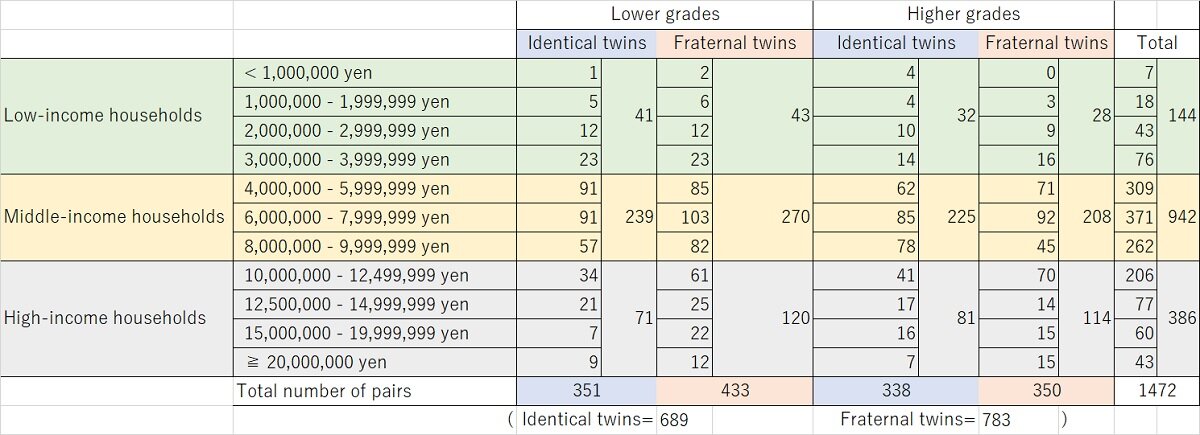
In terms of zygosity, the number of fraternal twins slightly exceeds the number of identical twins. In terms of household income, the number of middle-income households exceeds those in the remaining two categories. Table 2 shows the breakdown of twins by parental educational attainment (because this question was optional, there were some non-respondents; therefore, the total number of twins in Table 2 is not consistent with Table 1). Most data of paternal educational attainment are shown with the same level of maternal educational attainment, but the combination of lower education (junior /senior high school) and higher education (university and beyond) is also noticeable.
Table 2: Breakdown of twins by parental educational attainment

In this survey, we used the following question items: children's academic performance in Mathematics and the Japanese language during the relevant academic year by March, study hours, cram school lesson, and extracurricular lessons. The first question of "Did your children achieve good academic performance in Mathematics and Japanese Language?" has four answer choices ranging from "1. Not True," "2. Probably Not True," "3. Probably True," to "4. True." The second question of "How many hours do your children study at home after school (including study hours at cram school, private school, or home tutoring)" has five answer choices ranging from "Almost none (0)," "Less than 30 minutes (0.5)," "About one hour (1)," "About two hours (2)," and "Three hours or more (3)" (figures in brackets represent scores). The third question of "Do your children attend cram school or extracurricular lessons?" has two answer choices of "Yes (1)" or "No (0)."
Results and Discussion
1. Children's academic performance and learning environments affected by socioeconomic disparities
The survey results shown in Figures 1 and 2 delineate individual differences in academic performance affected by household income which have been pointed out by educational sociologists. Looking into the annual household income groups of four million yen or more, which have a significant sample size, children's academic performance is clearly linked to household income (i.e., higher performance and higher income). At this point, we excluded the annual household income group of less than four million yen, which has a relatively small sample size and thus did not provide sufficient data reliability (in addition, families actively participating in this kind of survey might not represent low-income households).
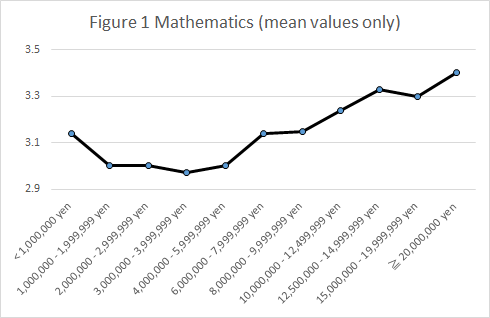 Figure 1: Breakdown of children's mathematical achievements by household income
Figure 1: Breakdown of children's mathematical achievements by household income
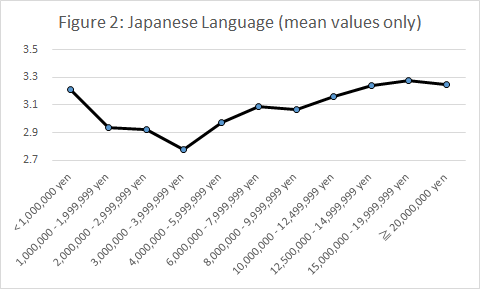 Figure 2: Breakdown of children's Japanese language achievements by household incomes
Figure 2: Breakdown of children's Japanese language achievements by household incomes
Next, these household income groups were divided into three levels and then aggregated with other indicative factors (Table 3). This method is a typical analysis approach used in educational sociology. The results indicate that more children from higher-income households show higher academic performance, put in longer study hours, and have a higher frequency of cram school/extracurricular lessons (each income level shows significant differences except the category of Mathematics which shows no difference between low-income households and middle-income households).
Table 3: Breakdown of children's academic achievements and learning environments by household income

In addition to the household income analysis, a correlation coefficient chart was created indicating the linkage between parental educational backgrounds and children's academic performance/learning environments (Table 4). This chart indicates a statistically significant positive correlation in all data categories. These correlation coefficient values are not noticeably high, ranging from around 0.12 to 0.24. Therefore, their coefficient of determination (calculated by squaring the correlation coefficient) is not high either, ranging from 1.4% to 6.0% (mean value: 2.6%). Nevertheless, these values are not statistically negligible.
Table 4: Correlation coefficient chart (parental income/educational backgrounds vs. children's academic performance/learning environments)

These data give us the impression that there seem to be individual differences in academic performance and learning environments affected by household income. As a result, we tend to think that children from low-income households necessarily have poor learning environments and poor academic performance.
Then, another analysis was conducted by reflecting the deviation factor appearing in each category. The result showed completely different outcomes. Figures 3 and 4 show the values within one standard deviation (SD) of the mean of academic performance in Mathematics and the Japanese language extracted from Figures 1 and 2. The term "standard deviation (SD)" means the measure of dispersion of a set of data from its mean value. About 68% of all data are spread within one standard deviation of the mean. Now we can see that deviations within each income level are more substantial than deviations between the income levels.
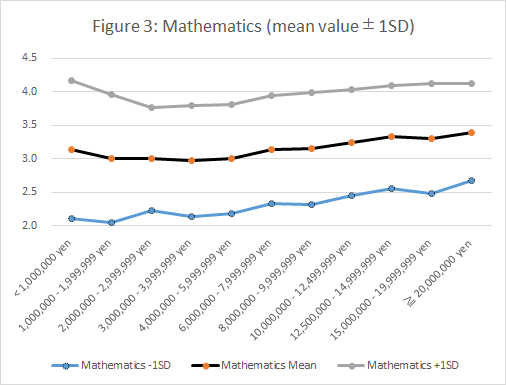 Figure 3: Standard deviations in children's mathematical achievements by household income level
Figure 3: Standard deviations in children's mathematical achievements by household income level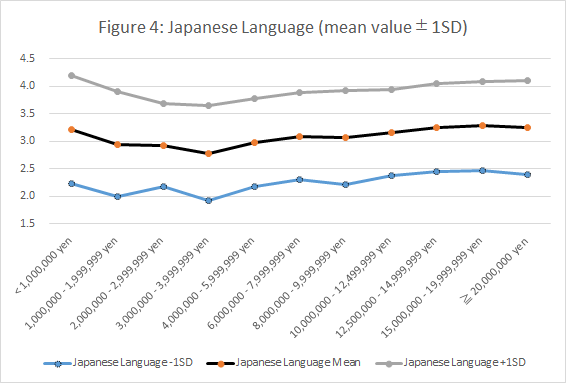 Figure 4: Standard deviations in children's Japanese language achievements by household income level
Figure 4: Standard deviations in children's Japanese language achievements by household income levelThe same trend is observed in children's study hours and cram school/extracurricular lessons as shown in Table 3 (Figures 5a, 5b, and 5c show the data of children's learning environments according to low-, middle-, and high-income levels).
 Click image to enlarge
| ||
(a: study hours; b: cram school lessons; c: extracurricular lessons)
These results confirmed individual differences in academic performance and learning environments affected by parental socioeconomic status. However, the differences between the categories are not as clear as emphasized by educational sociologists. Rather, there are more substantial individual differences in each category than those between the categories. In other words, for example, the individual differences in academic performance and learning environments between you and your friend from a different social class cannot be explained simply by the level of household income or educational background.
2. Genetic factors that affect children's academic performance and learning environments
Then, what factors will affect children's individual differences in academic performance and learning environments, even though they belong to the same social class? This section will examine the origin of such differences by focusing on genetic factors and environmental factors, respectively, using the twin method. The twin method is a behavioral genetics approach to estimate the effect of genetic factors by comparing identical twins (sharing the same genes and family environments) with fraternal twins (sharing half of their genes with the other twin and the same family environments). Because identical twins are obviously more similar than fraternal twins, they might be more likely to be affected by genetic factors. In addition, the twin method estimates the effect of genetic factors as well as the effect of family environments that cannot be explained by genetic factors only (so-called "shared environment" in behavioral genetics) by comparing the differences in similarity between identical twins and fraternal twins. This approach can also estimate the effect of non-shared environment that appears on a child-by-child basis. Therefore, differences within identical twins can be attributed to non-shared environment (Ando, 2018).
First of all, the similarity (Pearson's correlation coefficients) of raw scores were calculated between identical twins and fraternal twins in terms of their academic performance in mathematics and the Japanese language as well as learning environments (study hours, cram school lessons, and extracurricular lessons). Then, the similarity of residual scores were statistically calculated which exclude, by a multiple linear regression analysis, the effects of household income and educational background that result in children's individual differences, as well as the factors of gender and age (in the case of fraternal twins, different- and same-sex twins were totaled). Figures 6 and 7 show the data of children in the lower grades, while Figures 8 and 9 show the data of children in the higher grades.
By comparing these data before and after adjustment using disparity variables, it is confirmed that there are immaterial differences in the correlation patterns. Suppose the factors of household income and educational background produce the effect of "shared environment" and increase the similarity of twins. In that case, excluding the effect of such factors should have noticeably decreased the similarity of twins. The fact is, however, that the results show minimal reductions with a correlation coefficient of around 0.05 at most.
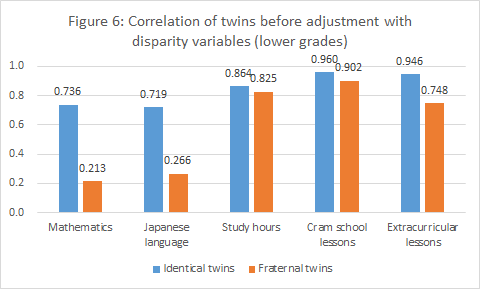 |
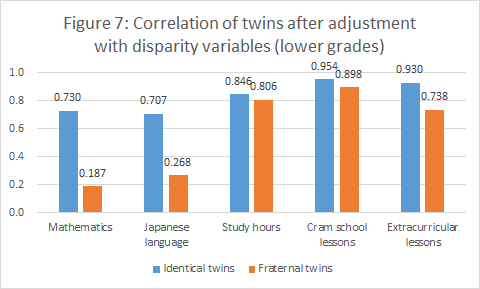 | |
| Figure 6: Correlation of twins before adjustment with disparity variables (lower grades) | Figure 7: Correlation of twins after adjustment with disparity variables (lower grades) |
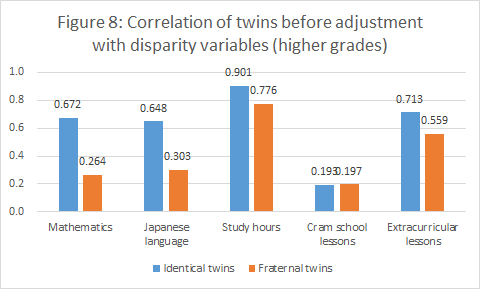 |
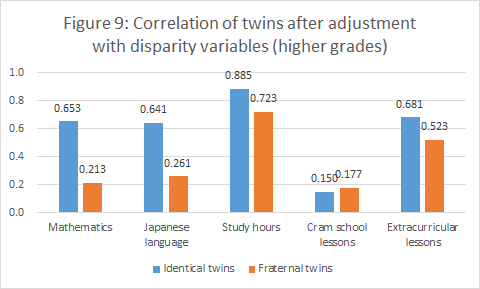 | |
| Figure 8: Correlation of twins before adjustment with disparity variables (higher grades) | Figure 9: Correlation of twins after adjustment with disparity variables (higher grades) |
Figures 10, 11, 12, and 13 show the estimated percentages of genetic factors, shared environment, and non-shared environment, respectively.
These data still indicate minimal differences before and after adjustment using disparity variables (such as household income and educational background). Rather, it is surprising that, in terms of academic performance, those of more than 70% of children in the lower grades and about 65% of children in higher grades are attributed to genetic factors. This means, there is no impact of shared environment (family environment), which is considered a disparity variable, on children's academic performance.
In contrast, the effect of environment factors (in particular, the effect of shared environment) on individual differences in learning environments such as study hours and cram school/extracurricular lessons, are highly significant. It should be noted, however, that, among children in the higher grades, only 1.8% in terms of study hours, 2.4 % in terms of cram school lessons, and 3.6% in terms of extracurricular lessons are attributed to the effect of parental socioeconomic status (which decreased as shared environment after adjustment using disparity variables). There is no individual difference among children in the lower grades in terms of learning environments attributed to their parental socioeconomic status. In sum, the effect of shared environment (as part of family environments) on children's academic performance is not observed. The effect of environmental factors (such as the force to discipline or make the child follow the educational rules at home) other than socioeconomic factors is far more significant in terms of children's learning environments.
Other noticeable findings show that the effect of genetic/environmental factors on children's learning environments considerably differs among children in the lower grades and those in the higher grades. The effect of shared environment is significant for children in the lower grades in terms of study hours and cram school/extracurricular lessons. This phenomenon indicates that parental discipline and supervision influence younger children's behavior more than the factors of household income and educational background. In addition, for children in the higher grades, the effects of genetic factors and non-shared environment are more significant in terms of study hours and cram school/extracurricular lessons, respectively. Conversely, however, the effect of shared environment will decrease.
Therefore, it can be said that genetic factors may be triggered by self-actualization needs, while a non-shared environment may involve other factors outside the home such as friends and school classes different from the other twin (even in the case of identical twins). All of these factors are specific to each child, even though the twins are being brought up by the same parents in the same family environment. The effects of such factors will increase, along with children's growth. In contrast, the effects of environmental factors such as parental socioeconomic status will gradually decrease, because children (even identical twins) will acquire the ability to live independently along with their growth.
Conclusion
To be sure, educational inequality does exist. Children's academic performance will be affected by their family of origin's status, such as household income and educational background, over which children have no control. Children from higher-income households can have more chances to receive additional education such as cram school/extracurricular lessons and put in longer study hours, which result in differences in academic performance. In this survey, we observed this phenomenon as a statistically significant trend based on the mean data of each survey category, including household income and educational background.
When looking at sociological data analysis only, it may be illusorily mistaken that environmental factors alone are the sole cause of these disparities. To avoid this illusion, it is essential to understand the effect of genetic factors through the twin method, a behavioral genetics approach to discover their attributes. By adopting this method, we can ascertain the contribution rate of each factor category (i.e., genetic factors, shared environment, and non-shared environment) that causes individual differences in academic performance and learning environments. As a result, we can come up with a completely different story from the one obtained from sociological data analysis.
With the conventional method to examine socioeconomic disparities based on mean values, there have been significant deviations from the mean values. A quantitative analysis on the contribution rates of such differences was conducted, using correlation coefficients and the twin method. As a result, it was found that the percentages of contribution to academic performance and learning environments are typically less than 3%, and up to around 6%. In other words, deviations within each socioeconomic level are considerably greater than deviations between the socioeconomic levels. For people from low-income households, this trend is good news, suggesting that they do not need to care too much about their family of origin in socioeconomic environments. In contrast, people from higher-income households will recognize that they should not let their guard down by over-relying on their social status.
However, negative findings are also revealed when considering genetic factors (which cause individual differences) in the analysis. In fact, about 60-70% of individual differences in academic performance are considered to be caused by genetic factors, instead of family environments (i.e., shared-environment). In other words, it is highly likely that the linkage of household income/educational background and children's academic performance is not influenced by environmental factors, but by genetic factors passed on from parents to children. However large the genetic influence, it is not totally hereditary, thus there is still a possibility to improve children's academic performance by environmental factors. This possibility, however, comes from the non-shared environment specific to each child, even for identical twins brought up in the same family. About 30-40% of individual differences are affected by a non-shared environment. Therefore, it is necessary to understand the effect of a non-shared environment on a child-by-child basis to determine whether such an impact will enhance or impede the child's academic performance.
Meanwhile, the effect of environmental factors on children's learning environments such as study hours and cram school/extracurricular lessons is more significant than genetic factors. Such environmental factors include parental socioeconomic status and educational background and other factors such as parental disciplines and values on children's learning, community environments, and the influence of siblings. The significance of environmental factors is greater for children in the lower grades than for children in the higher grades. In this regard, children's learning environments and parental values towards childrearing are different in each family. In contrast, the influence of genetic factors is minimal. We tend to think of human behavior patterns based on environmental determinism, and consider the effect of environmental factors on children's learning environments as discussed above. Therefore, it is naturally expected that environmental factors cause individual differences in academic performance. It is a fact, however, that such differences are caused by genetic factors.
It should be noted that genetic factors do not necessarily mean phenotypic characteristics inherited from a parent to a child. Genetic factors identified through the twin method are genetic similarities not only between parents and offspring but also genetic effects which are randomly inherited from half of each parent's genes, of which the combination is different in each parent. Therefore, each child (except identical twins) will have unique genetic characteristics different from their parents. Behavioral geneticists have clarified, to a greater or lesser extent, the effect of such unique genetic characteristics on individual differences in children's various behavior patterns (Turkheimer, 2000). Academic performance is considered to be part of such behavior, which is quite common from a biological perspective. However, this concept significantly violates social norms about education (i.e., children's academic performance is affected by parental/family environments).
The findings of this study are partly inconsistent with the findings of conventional behavioral genetics studies regarding children's academic performance. For example, past studies revealed that about 30-40% of individual differences in academic performance were affected by a shared environment, while about 50% of individual differences were affected by genetic factors. In addition, unlike conventional studies, this survey employs parents' subjective rating in response to the question of "How well is your child's academic performance?" instead of referring to children's test scores or report cards at school. If a shared environment affects children's academic performance, fraternal twins may show higher correlation values. However, by employing parents' subjective rating, it might be easier for parents to recognize differences in fraternal twins than identical twins who have very similar appearances. Therefore, to determine the appropriateness and generalizability of the findings of this survey, it is ideal for us to obtain additional data from objective evaluations on academic performance.
Most parents will not be happy to hear that their child's academic performance is affected by either economic inequalities or genetic factors. This is because such factors cannot be controlled no matter how hard their child tries.
Nevertheless, there is still some hope if family environments influence children's academic performance. The situation can be changed by parents' efforts and economic/educational policies. In the case of genetic factors, however, the situation can never be altered unless their genes are completely renewed through gene manipulation or genome editing. So long as people maintain their value on education, focusing on higher academic achievements and superior educational attainment by graduating from a top university to get a better job, both the findings of educational sociologists and behavioral geneticists will be detrimental. People with disadvantageous socioeconomic backgrounds may feel hopeless with these findings. In contrast, people who are socially and economically advantaged will either be full of conceit or have low self-esteem due to feeling they did not earn their status on their own. Therefore, it would be better not to publish such findings.
However, is it true happiness for people if they are not informed of scientific findings from evidence-based research? In the first place, what is the ultimate goal of receiving education at school? To achieve good academic scores? The original purpose of education was to share useful knowledge to live within their community, instead of competing in capabilities with others. This is part of adaptation strategies embedded in the human process biologically and evolutionally, which helps humans and society survive effectively (Ando, 2018). Suppose it is true that individual genetic differences considerably affect children's academic performance, as indicated by this survey. In that case, we should create a new value or concept for education and academic achievements. In this way, we can flexibly adjust learning contents and processes according to such genetic differences. Some people may criticize this idea as too idealistic. However, if we do not make serious efforts to change conventional values, people will continue harboring the illusion of eliminating educational inequality by changing family environments. As a result, the current eugenics mechanism will never change and people with superior genetic characteristics will remain as socially advantaged. This will not be the true solution to the current issue of educational inequality. For this reason, we determined to publish the findings of our survey, hoping that our readers will recognize and understand the actual situation of educational inequality.
References
- Akabayashi, H., Naoi, M., and Shikishima, C. (2016) An Economic analysis of academic ability, non-cognitive ability, and family background. Yuhikaku Publishing Co., Ltd.
- Asbury, K. & Plomin, R. (2013) G is for genes: The Impact of genetics on education and achievement. Wiley-Blackwell. (translated by Tsuchiya, H. Shinyosha)
- Ando, J. (2018) Why do humans learn? Thinking of education from biological perspectives. Kodansha Gendai Shinsho.
- Chambers, M.L. (2000) Academic achievement and IQ: A longitudinal genetic analysis (twin pairs). Dissertation Abstracts International : Section B: The Sciences and Engineering, 60(7-B), 3551.
- Kariya, T. and Shimizu, K. (2004) Sociology of academic achievement: changes of academic achievement and problems of learning shown by surveys. Iwanami Shoten.
- Lichtenstein, P., & Pedersen, N. (1997) Does genetic variance for cognitive abilities account for genetic variance in educational achievement and occupational status? A study of twins reared apart, and twins reared together. Social Biology, 44, 77-90.
- Loehlin, J.C. & Nichols, R.C. (1976) Heredity, environment, and personality: A Study of 850 Sets of Twins. University of Texas Press.
- Matsuoka, R. (2019) Educational inequality: Social classes, regions, and educational background. Chikuma Shinsho.
- Nozaki, K., Higuchi, Y., Nakamuro, M., and Senoh, W. (2018) Relationship between household income/family environment and children's educational performance based on an international comparative analysis. NIER Discussion Paper Series No.008.
- Turkheimer, E. (2000) Three Laws of Behavioral Genetics and What They Mean. Current Directions in Psychological Science, 9(5), 160-164.



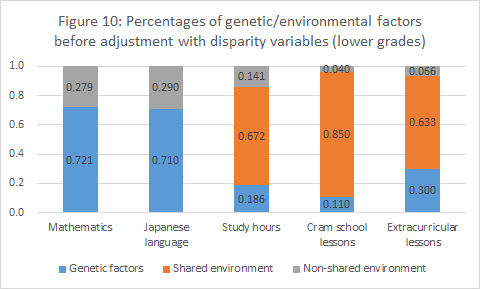
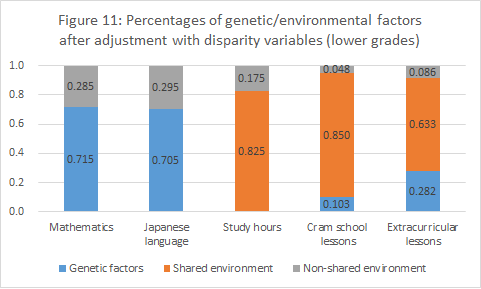
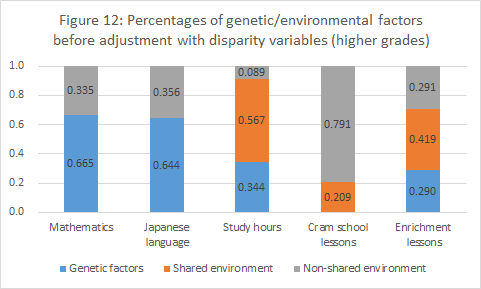
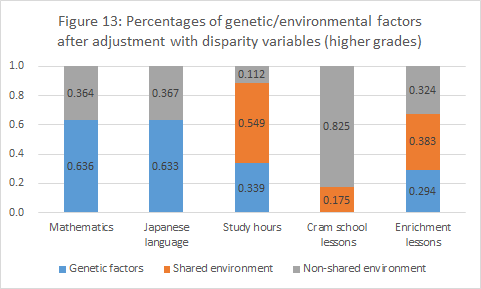
 Juko Ando
Professor at the Faculty of Letters, Keio University, Ph.D. (Education)
Professor Ando graduated from the Faculty of Letters, Keio University in 1981 and obtained his doctorate degree from the Graduate School of Human Relations, Keio University in 1986. He specializes in behavioral genetics, educational psychology, and evolutionary pedagogy, and assumed his current position in 2001. Since 1998, he has been engaged in a large-scale twin cohort study and collected data from more than 10,000 twin pairs, from newborn babies to adults. He is currently conducting longitudinal studies mainly on the effects of genetic and environmental (mainly educational environments) factors on the development of children’s cognitive skills and personality. His publications include “Psychology of genes and environment: introduction to human behavioral genetics” (2014, Baifukan), “Ninety percent of Japanese people do not know the truth of heredity” (2016 & 2017, SB Shinsho), and “Why do humans learn? Thinking of education from biological perspectives” (2018, Kodansha Gendai Shinsho).
Juko Ando
Professor at the Faculty of Letters, Keio University, Ph.D. (Education)
Professor Ando graduated from the Faculty of Letters, Keio University in 1981 and obtained his doctorate degree from the Graduate School of Human Relations, Keio University in 1986. He specializes in behavioral genetics, educational psychology, and evolutionary pedagogy, and assumed his current position in 2001. Since 1998, he has been engaged in a large-scale twin cohort study and collected data from more than 10,000 twin pairs, from newborn babies to adults. He is currently conducting longitudinal studies mainly on the effects of genetic and environmental (mainly educational environments) factors on the development of children’s cognitive skills and personality. His publications include “Psychology of genes and environment: introduction to human behavioral genetics” (2014, Baifukan), “Ninety percent of Japanese people do not know the truth of heredity” (2016 & 2017, SB Shinsho), and “Why do humans learn? Thinking of education from biological perspectives” (2018, Kodansha Gendai Shinsho).










